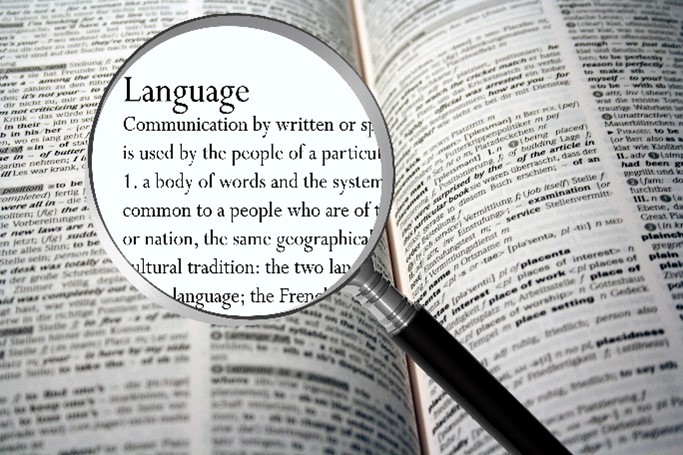
The barriers to keeping NHS staff healthy
Internal comms can help to keep NHS staff healthy – both physically and mentally – but only once we fully understand the potential blockers. This blog brings these barriers to the surface.

Internal comms and engaging internal comms are two very different things. In our opinion there is no point sending something if your staff don’t look at it. But creating engaging internal comms is a really difficult task. In fact, it’s even harder today than it used to be. Twenty years ago, research found that we have an attention span of 12 seconds. Today, this has reduced to 8 seconds.
But why can we no longer concentrate for as long?
Distraction. We have distractions everywhere. I bet just by inserting the emojis below you looked at those before reading this sentence!






Today we are always connected. Smartphones, hyperlinks, pop-ups; they all grapple for our attention making it far harder for us to focus on one thing at a time.
So, if we don’t capture the attention of our staff in that 8 second window, there’s really little point in sending the communication in the first place.

The 101 of internal communications: using the right language to capture attention.
Headers and subject lines need particular attention because these in themselves could use half of those precious 8 seconds. Draw upon your creative juices and really put yourself in the shoes of your staff to find a headline that will make them want to read on. Below are some of the best subject lines we’ve seen our customers use when covering some of the ‘drier’ topics.
Internal comms subject lines that work
• “Upcoming changes: action required” (used for a policy update)
• “Your input is needed today” (used for a staff survey)
• “Breaking news” (used for a COVID update)
• “[name], thank you” (used for a financial update)
• “The recipe for success” (used for a financial update)
• “We did it again” (used to notify people of a health and safety standard)
8 rules to follow when writing internal communications
In addition to the initial hook of the subject line, keep these best practices in mind with everything you write:
• Write for people, from people
• Use the vernacular your employees use
• Be succinct
• Use headlines to break copy up
• Ensure the purpose of the communication is upfront and clear
• Be consistent
• Always proof read!
The majority of us are very visual. For example, a study found that 75% of staff are more likely to watch a video than read an email or text.
That’s because we’re able to digest more information if it is visual and this captures our attention for longer. Even if text is necessary in your communication, consider using something visual at the start to draw people in.

Sending specific communications at set times can help with engagement. It becomes familiar for your staff to pause what they are doing and digest your communication. BUT this will only be effective if your communications are informative.
Just because you’ve always sent a newsletter every month for the last 6 months, it doesn’t mean you should maintain that rhythm if you don’t have anything valuable to say. If you believe employees have tuned into the consistency of your updates, instead of sending the full-blown newsletter you could just send a shorter message or even push out a note to say, ‘everything is ticking over nicely but it’s been a quiet month so just tune in next month instead!’.
Don’t be afraid to break the mould. Staff will appreciate this level of honestly and it’ll help you keep their attention for longer.

Not everything will be relevant to everyone. By segmenting your staff you will be able to filter the content they receive to keep them engaged.
We experience segmentation constantly. The recommendations we receive via our online supermarket shop relate to what we’ve bought before and the adverts that pop up on web pages are items we’ve looked at but not yet bought. We live in a consumer-led world in which we are presented with information that is relevant to us. We therefore expect the same ‘personalisation’ in our working lives.
If I repeatedly receive information that is not relevant to me, I will ignore it from the moment the message arrives. We’ve all been there. Think about the times you’ve ended up on a mailing list for something you have no interest in. Now, as soon as you see who the email is from, it goes straight into your deleted folder.
Your internal communications must have relevance. Only send internal communications to the people it is relevant for, or of interest to. These segments need to be mapped against the type of communications you send and you will probably have multiple segments for each member of staff. For example, geographical segmentation, job role segmentation and project segmentation.
There’s no right or wrong way to segment. Just segment against your communication plan.

Closely linked to the above point.
Ensure your communications are addressed to the individual. “Dear Team” doesn’t cut it when we are used to the level of personalisation described above. Our staff need to feel as though you are speaking directly to them.
Addressing your messages to a named person is a start but personalisation can go much further. With relevant segments in place, you can tailor messages much more precisely. Some technologies also enable you to respond to previous actions taken and tailor web pages against data and behaviours.
Ultimately, the more you can personalise your internal comms messages, the more engaged your staff will be.

On top of segmentation and personalisation consider the connections staff have with each other. People are interested in people. Utilising the connections that already exist will grab attention.
The sender
Your communications don’t have to be sent from the same person. And they certainly shouldn’t be sent from an ‘empty’ email address or account. For example, “The internal comms team” or worse still “do-no-reply@company-name”!
Think about the messages you are trying to get across and consider which ‘sender’ would capture the attention of your recipients the best. Would a financial update be better if it was passed down the chain and interpreted by each manager? Would the Christmas party announcement be better coming from someone at the centre of most social occasions?
Combining communications
Whilst necessary, ‘dry’ topics can make it extremely difficult to capture attention. If you aren’t seeing the engagement levels you want, consider wrapping your more mundane topics up with other people-focused updates. For example, while the financial update is important, your employees are more likely to be drawn to an update about their colleague. Using this as your hook could get their attention enough for them to then go on and read the financial update.

Within a few seconds you will decide if a communication deserves your attention purely based on how it looks. Take this blog as an example. If I had written this as it comes out of my mind without any paragraphs, breaks or headlines you probably wouldn’t have got this far.
Structure and layout
We need to make communications as digestible as possible. Consider the layout of your communication, the use of colour, images and bold text. Even the font you use will influence opinion.
Accessibility
Access to your communications also need to be as easy as possible. If staff need to navigate software to reach your communications what is that journey like? Multiple clicks that are perceived to be unnecessary will become a blocker. As would an ineffective search facility. Go on the journey you are expecting your staff to take and ensure it is as efficient and intuitive as possible.
Preference
If you are in a position to ask your staff what their preferred channel is for receiving information do so. By giving them control of how they digest information they will instantly be more engaged.
Piggy backing
Consider if your communications can sit alongside your staff’s day-to-day job. If there is a central access point for data or documentation could your communications also be located there? It’s no coincidence that intranets host HR documentation and employee engagement platforms include employee directories. These sources of information act as a ‘pull’ to bring staff to a central point. With communications in the same place, you are making the process easier for your staff.

If you have something really important to tell staff, shout about it. You are just one communication amongst many distractions so use attention-grabbing techniques: push notification via text message, pop-ups on the intranet, urgent notifications on emails.
Whatever tools you have available, don’t be shy about utilising them. But don’t do it often. If you do, the perception of ‘urgent’ will fade.

Be the source of information
Every internal communication needs to be informative, accurate and timely.
If I’ve heard news via the grapevine, I’m unlikely to read a post about it two days later. Even if the information I received initially went through a process of Chinese whispers and isn’t actually accurate, I’m unlikely to pay the officially update any attention because it will feel like old news.
Wherever possible, internal communications need to be the first source of information, not an afterthought.
Accommodate working life
Whilst internal communications must be the informant of news, they must also consider the working patterns of staff. If there is always a ridiculously busy period, important, non-time sensitive, communications should be reserved until there is greater capacity to digest the information.

While all the above points are nuggets of best practice, ultimately it is your staff that will tell you what grabs their attention. Use all the stats available to you to build a picture of what works well.
There is a plethora of data sources: the above is just a snapshot. Once you establish what data is available to you, build analysis into your schedule until you have enough insight to inform your decisions.
This will make a huge difference. It will take away the guess work and give you evidence that you can build from.
The purpose of internal communications is essential. They exist to inform and create a community. But in the busyness of our lives, they can be overlooked and this purpose can get lost. With these 10 steps in place, you will produce engaging internal comms that capture attention within those vital 8 seconds and beyond.
NewZapp Trusted Delivery is an internal comms email platform specifically for the NHS. We provide the tools to produce engaging communications whilst also guaranteeing delivery and providing detailed analytics.

Marketing Manager
With over 15 years’ experience in communications I have seen first-hand the difference strong internal communications can make. I am passionate about helping organisations reap the rewards of an engaged workforce and feel privileged to work for an organisation that has this same passion. We can achieve more when we work together towards the same goals.

Internal comms can help to keep NHS staff healthy – both physically and mentally – but only once we fully understand the potential blockers. This blog brings these barriers to the surface.

Staff surveys are a brilliant way to gather feedback but when the NHS is the biggest employer in Europe employing over 1.3 million staff, that is a lot of opinions, a lot of data and a lot of questions to get right!

Get in touch today to find out how NewZapp can increase the effectiveness of your internal communication.
We are NOT the NHS. We are a supplier of internal communications software. Please contact your local NHS hospital for all healthcare queries.
Tel: 01392 447200
Email: trusteddelivery@newzapp.com
Trusted Delivery is product of NewZapp Communications.
G-Cloud Digital Marketplace Documentation.
NHS Data Security and Protection Toolkit Registration.
Bradley House, Park Five Business Centre, Harrier Way, Exeter, Devon. EX2 7HU.